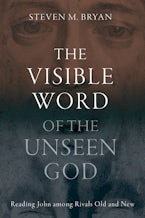From the late first century to the end of late antiquity, three rival traditions—pagan, Jewish, and Christian—found themselves at odds over one issue in particular: the nature of the relationship between divine reality and the material world. In this context, the Evangelist John constructed his bios of Jesus as a narrative apologia addressed primarily to Jews whose objection to the worship of Jesus was essentially the same as their longstanding objection to pagan iconic worship.
The Visible Word of the Unseen God argues that John wrote his Gospel for readers inclined to regard Christian claims about an incarnate Messiah as an illicit intermingling of the invisible reality of God with the visible creation. As such, the Gospel is best read as an act of scriptural reasoning that portrays the incarnation as a recapitulation of Israel’s encounter with God at Sinai, where the visible appearance of God in his Word formed the basis for proscribing any attempt to contain God’s presence in images. John designs his narrative to enable readers to hear the words spoken at Sinai as the life-giving words of the Logos and to see the incarnation, crucifixion, and resurrection as the definitive repudiation of idolatry—the climactic revelation of God’s visible glory as his presence in his Word.
An appreciation of this core feature of John’s Gospel serves as a striking counterpoint to a reductive secularism that strips reality of all but stuff and the self-creating human words we inhabit. At the same time, John is no ally to those critics of secularism who trace its rise to Reformation-era iconoclasm. John does not offer a ressourcement for post-secular reenchantment but rather an entirely different conceptual world. As John renders the world, God is not absent from his creation but neither is his presence diffuse within it. Rather, the Creator is and always has been present in his Word. Through the incarnation, crucifixion, and resurrection, the Word has become the sanctuary that human beings coinhabit with God and share in the life he lives and speaks.

